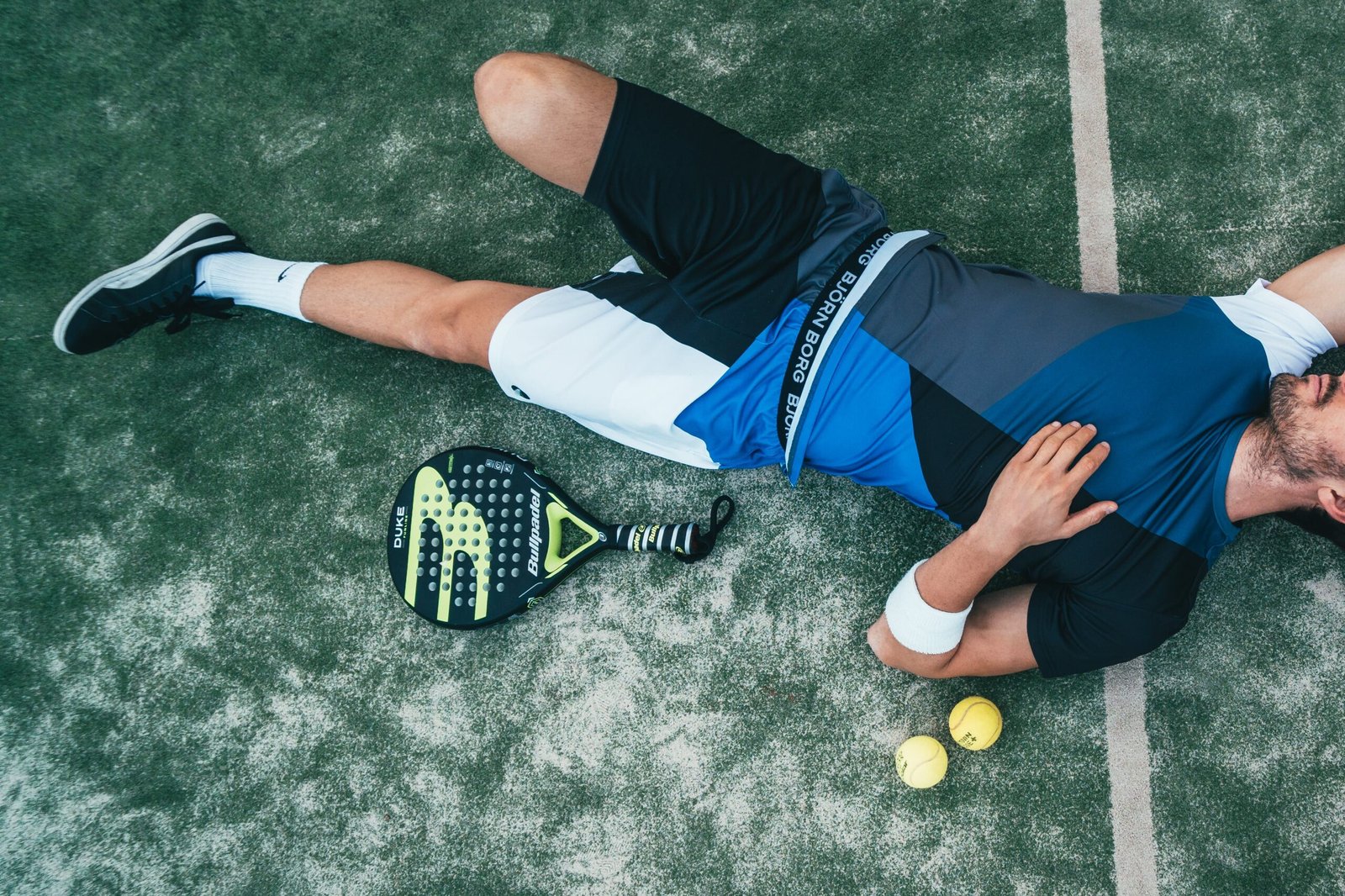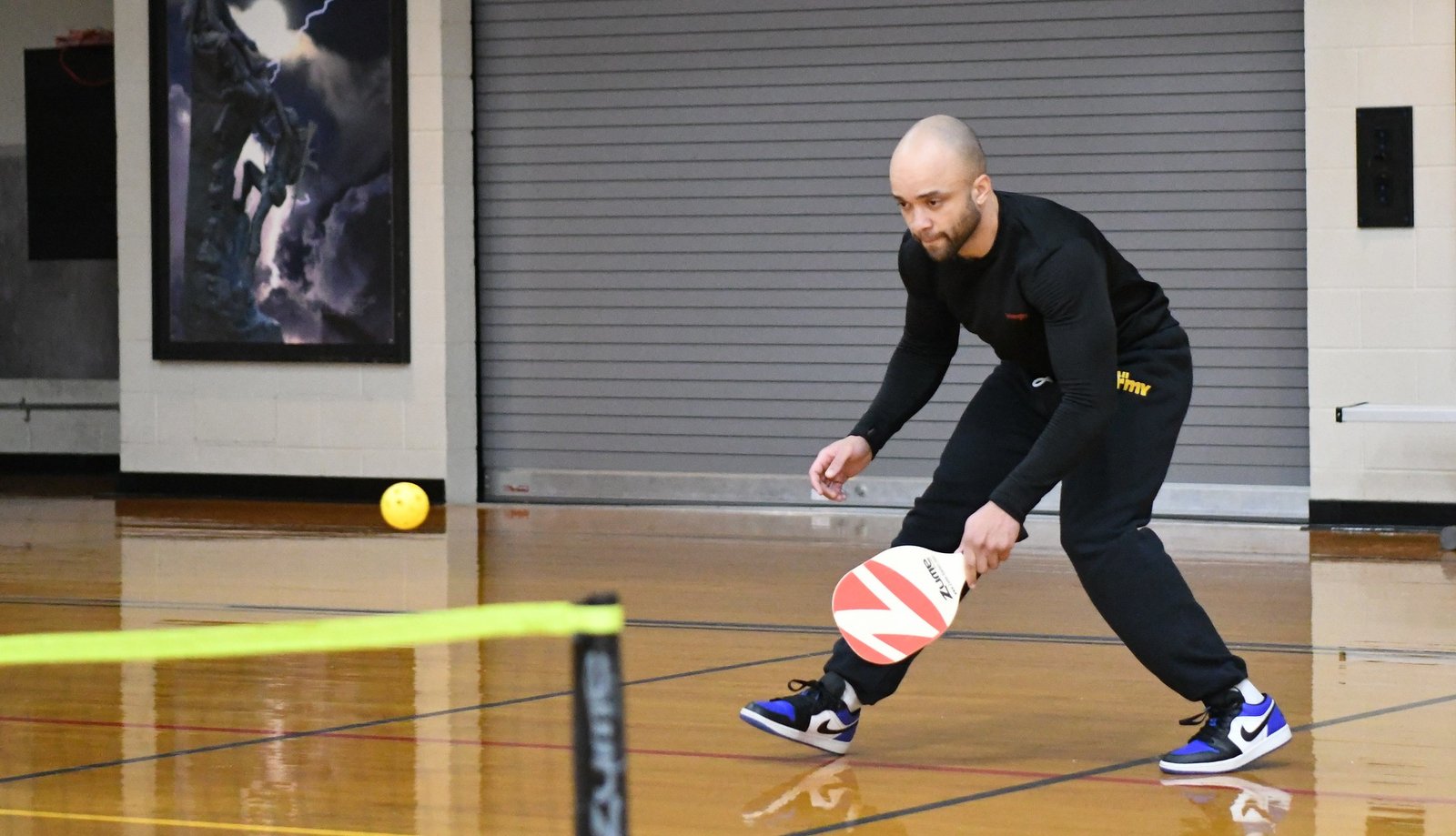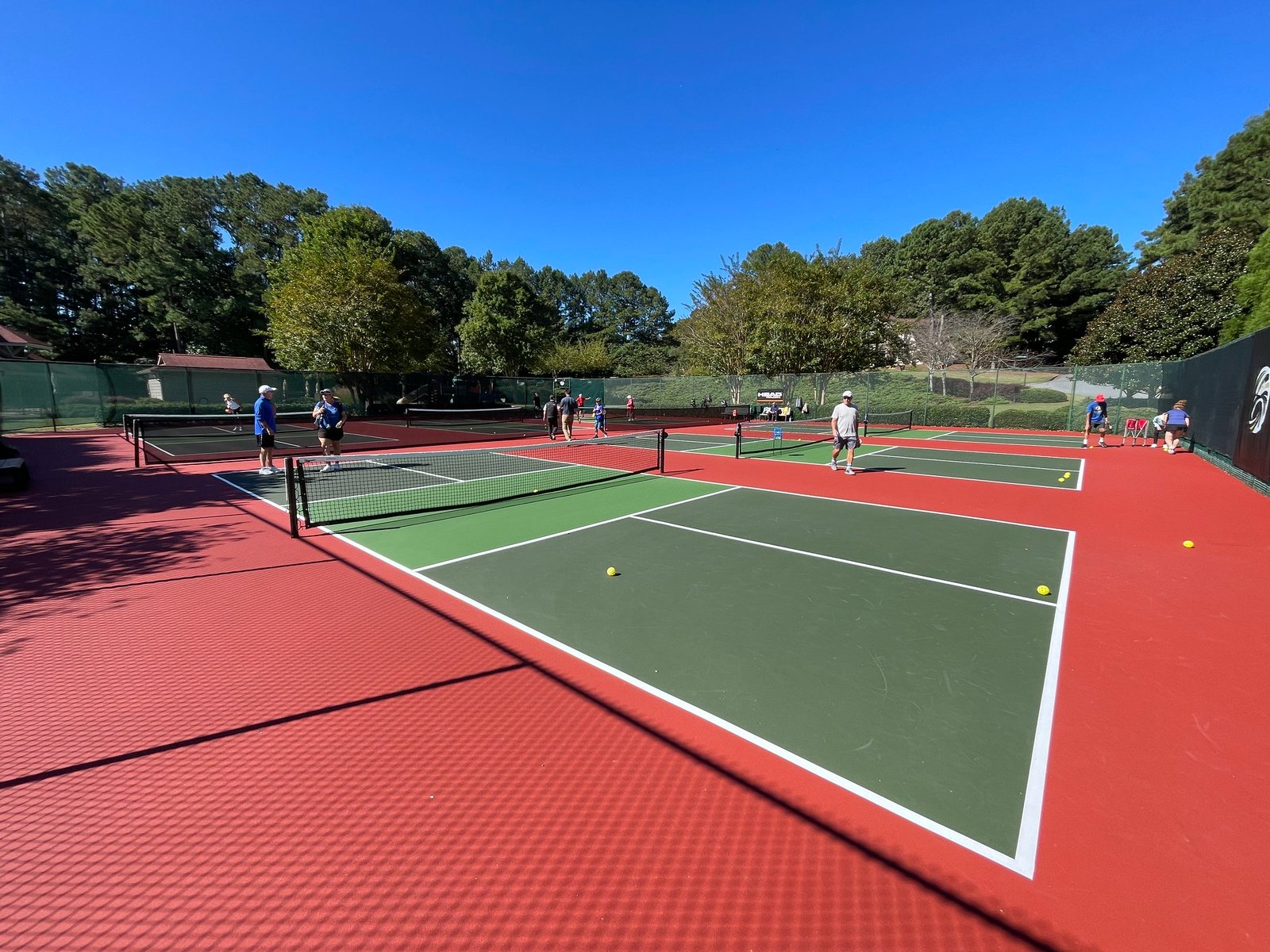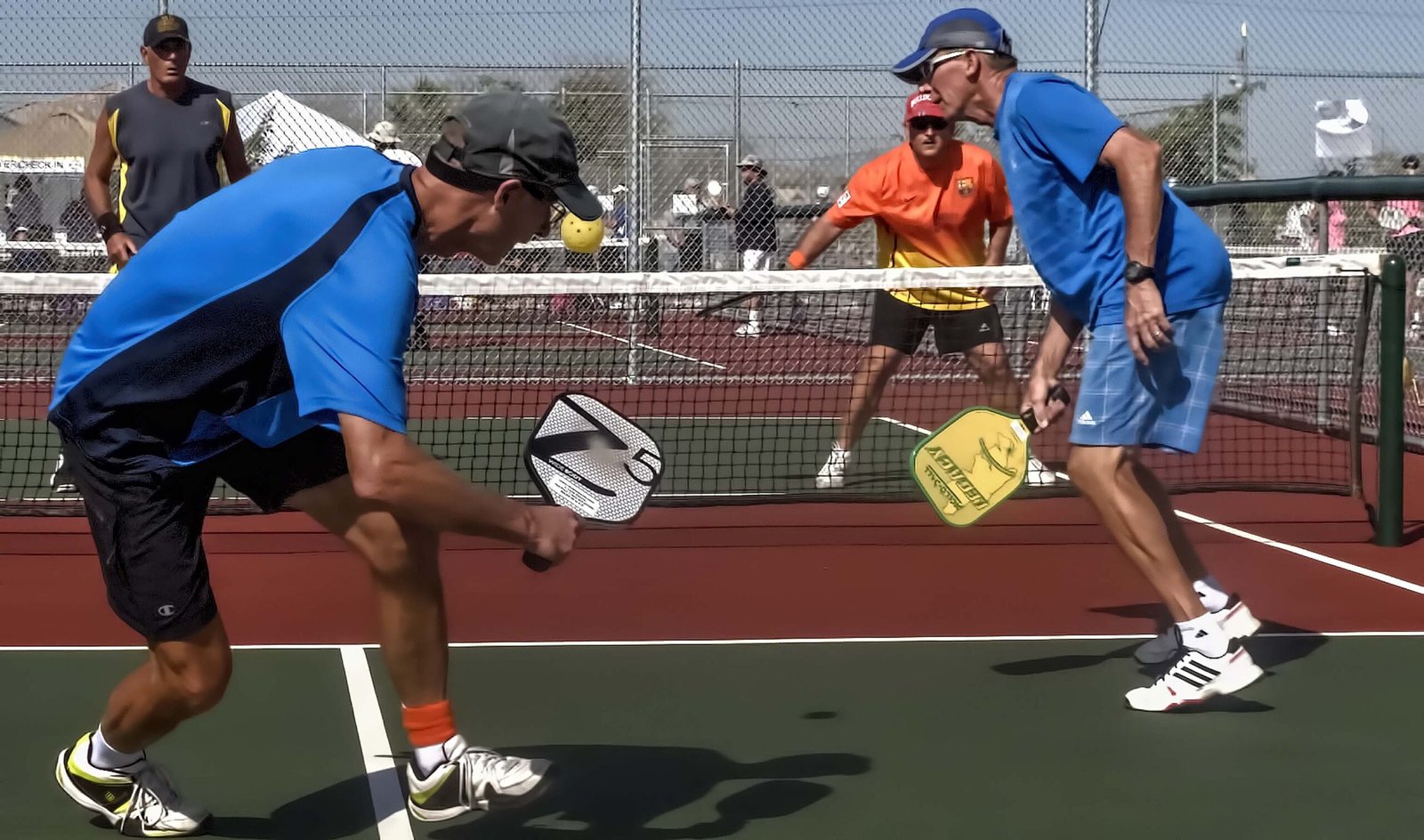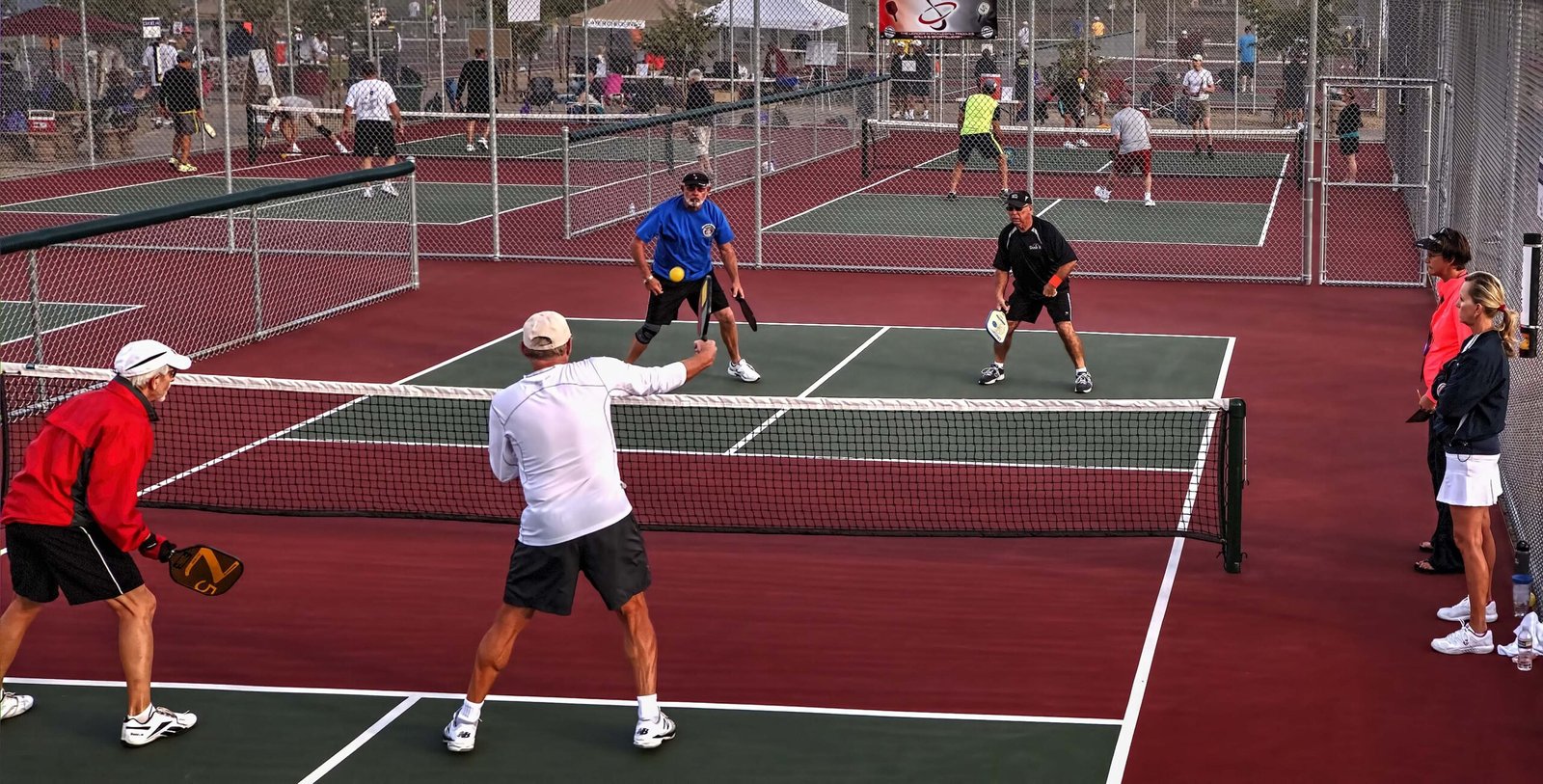Pickleball vs padel, they both stand as two distinct yet captivating racket sports, each with its unique set of characteristics, equipment, and gameplay. While these sports share similarities in their fundamental essence of using paddles and a ball, they diverge significantly in terms of origins, court structure, equipment, and rules.
Padel, which originated in Mexico during the late 1960s and gained prominence in Spain, offers an amalgamation of tennis and squash. The game incorporates solid paddles and a pressurized ball similar to a tennis ball but with less bounce. Padel courts, enclosed by glass or wire mesh walls, cover about two-thirds of a tennis court’s size and provide an intriguing dynamic of utilizing these walls strategically during the game.
The equipment in Padel consists of solid paddles, akin to tennis rackets but smaller in size, designed to complement the style and technique of the game. Understanding padel equipment nuances is crucial, as the right paddle can significantly impact a player’s performance and gameplay strategy.
When delving into the essence of the Padel game, it’s evident that it primarily revolves around doubles play, offering an engaging social aspect. Players can utilize the court walls to bounce the ball, allowing for creative shot-making opportunities and strategic plays that add a layer of complexity to the game. Padel’s rules dictate an underhand serve that must be directed diagonally across the opponent’s service box, fostering tactical serves that initiate the rallies.
On the other hand, pickleball, emerging in the mid-1960s in the United States, combines elements of tennis, badminton, and table tennis. The sport employs solid paddles and a ball akin to a wiffle ball, and it’s typically played on smaller courts with specific non-volley zones near the net, necessitating a different approach to gameplay.
As we delve deeper into the intricate differences between padel and pickleball, understanding the nuances of equipment, court structures, and gameplay rules becomes imperative in appreciating the distinct characteristics that make each sport compelling in its own right.
Table of Contents
Is pickleball and padel the same game?
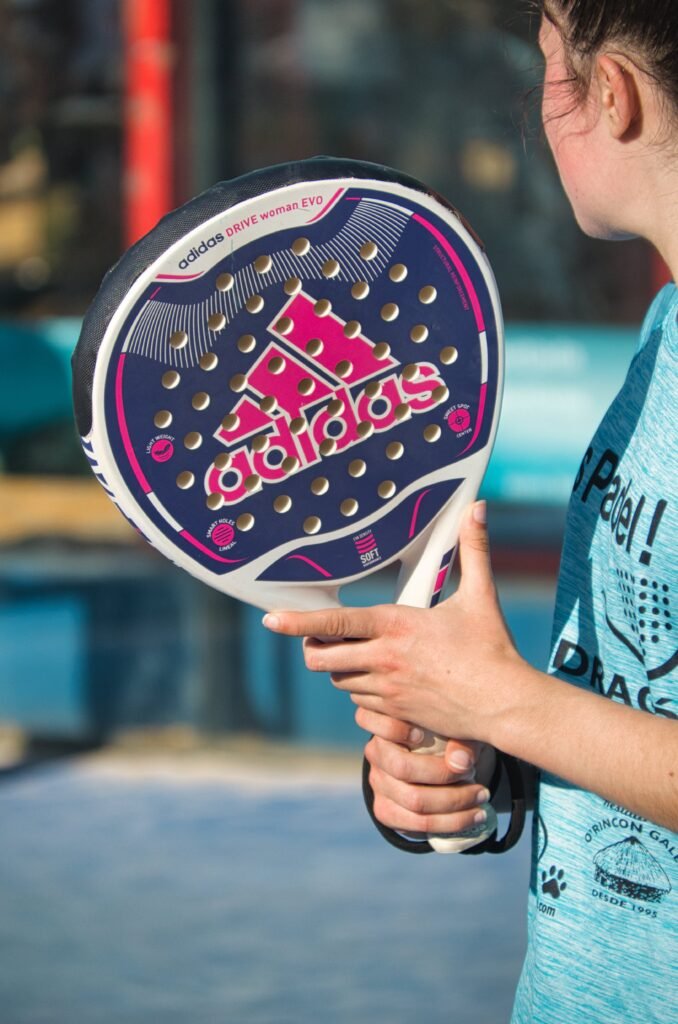
Pickleball and padel are not the same game; instead, they are distinct racket sports with unique characteristics, equipment, court setups, and gameplay rules. While both involve the use of paddles and a ball, they differ significantly in their origins, court sizes, equipment, and playing techniques.
Pickleball, originating in the United States in the mid-1960s, amalgamates elements from tennis, badminton, and table tennis. It utilizes solid paddles and a plastic ball with holes, akin to a wiffle ball, and is often played on a smaller court surface compared to traditional tennis courts. The game emphasizes quick reflexes, agility, and strategy, with a specific non-volley zone close to the net.
Conversely, padel emerged in Mexico during the late 1960s and gained prominence in Spain, presenting a fusion of tennis and squash. Padel employs solid paddles, similar to but smaller than tennis rackets, and a pressurized ball similar to a tennis ball, albeit with reduced bounce. The game unfolds on a court enclosed by glass or wire mesh walls, encouraging players to use these walls as part of their strategic gameplay.
While both sports involve hitting a ball with paddles, padel, and pickleball, they differ in court size, equipment, rules, and overall dynamics. Their distinct origins and unique elements contribute to varied experiences for players, making them separate and individual sports within the realm of racket-based activities.
What’s the difference – pickleball vs padel?
Pickleball and padel are both racket sports but differ significantly in terms of their origins, rules, equipment, and playing surfaces.
Origins
Pickleball
Originating in the United States during the mid-1960s, Pickleball was intentionally crafted as a family-friendly racket sport. The game’s inception resulted from a blend of key elements drawn from traditional sports like tennis, badminton, and table tennis. By incorporating the familiar aspects of these established games, Pickleball aimed to offer a unique and accessible sporting experience suitable for individuals of varying ages and skill levels.
Its creation was driven by the desire to merge the best qualities of tennis, badminton, and table tennis into a single, easy-to-learn game that promotes social interaction, inclusivity, and fitness. The sport’s adapted rules, smaller court size, and the use of solid paddles combined with a ball resembling a wiffle ball foster an environment that emphasizes both fun and competitive play. This blend of elements contributed to Pickleball’s rapid growth in popularity, appealing to a wide demographic and solidifying its place as a widely enjoyed recreational and competitive sport.
Padel
Padel, tracing its roots to late-1960s Mexico, evolved into a widely cherished sport, particularly in Spain. Originating from tennis, it seamlessly integrates aspects of this classic racket sport with the enclosed court dynamics akin to squash. Often described as a fusion of tennis and squash, padel has carved its distinct niche in the world of racket sports.
This hybrid nature is prominently reflected in the game’s court design, which incorporates enclosed walls akin to a squash court and shares some dimensions and markings with tennis courts. Padel’s key traits include the use of solid paddles and a depressurized tennis ball, allowing for slower gameplay and strategic wall-based shots, fostering a unique blend of techniques from both tennis and squash.
Its emergence in Spain led to a surge in popularity, with the country becoming a hub for padel enthusiasts and a driving force behind the sport’s global expansion. The amalgamation of tennis and squash elements in padel has garnered attention worldwide, appealing to players seeking a dynamic and engaging racket sport experience.
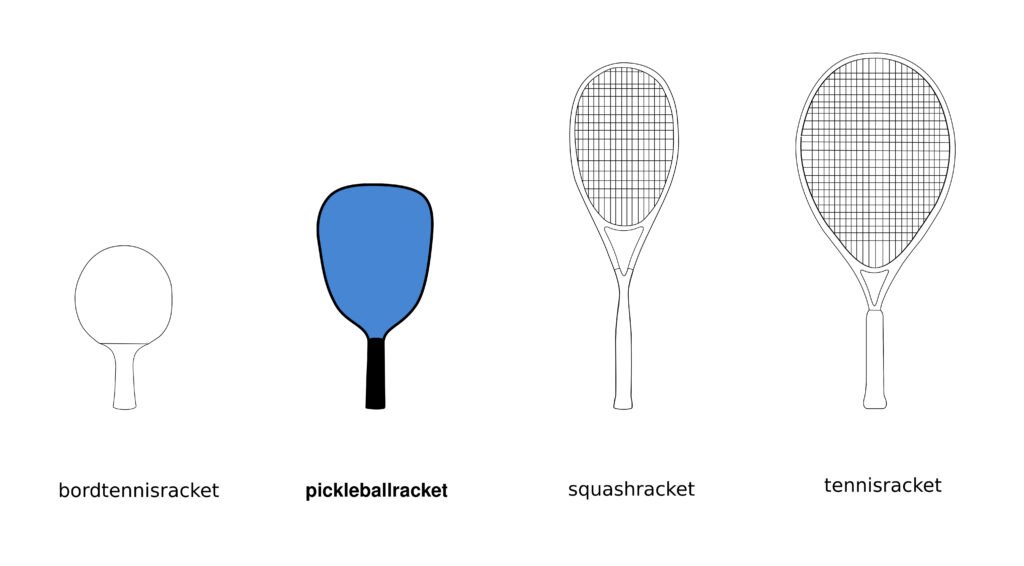
Equipment
Pickleball
In both pickleball and padel, players wield solid paddles crafted from a variety of materials, including wood, composite blends, and high-tech substances. These paddles come in diverse shapes and weights, catering to individual player preferences and styles. Their composition influences factors like power, control, and maneuverability on the court.
The ball utilized in these sports shares similarities. Resembling a wiffle ball, it features round perforations dotting its surface, which aid in reducing air resistance and altering its flight path. Slightly smaller than a standard tennis ball, this specialized ball contributes to the unique dynamics of both games. Its size and hole-pattern design impact the ball’s bounce, speed, and overall playability, requiring players to adapt their techniques for precise shots, strategic placement, and effective ball control during intense rallies on the court.
Padel
Padel, a racket sport gaining rapid global popularity, employs solid paddles reminiscent of tennis rackets but smaller in size. These paddles, typically made from composite materials, offer players a balanced mix of control and power during gameplay. The ball used in padel closely resembles a tennis ball in size and appearance but is specifically designed to have less internal pressure. This intentional reduction in pressure results in a slower game pace, enhancing the ball’s bounce and responsiveness on the court.
The altered ball characteristics contribute significantly to the strategic elements of padel, allowing players more time to react and plan shots while still requiring agility and skill. The combination of the specialized paddles and the modified ball properties creates a unique dynamic, fostering exciting rallies and diverse gameplay strategies in the fast-growing world of padel.
Court and playing surface
Pickleball
Pickleball’s court dimensions differ notably from a standard tennis court, typically spanning about one-fourth of the latter’s size. The court surface is hard and marked with specific lines that define the boundaries for singles and doubles play. Notably, the court layout includes a distinctive non-volley zone or “kitchen” situated close to the net on both sides. This designated area prohibits players from volleying the ball while positioned within it, fostering strategic play and minimizing the dominance of aggressive net play.
The non-volley zone aims to balance offensive and defensive strategies, encouraging players to engage in rallies from various parts of the court. Its presence adds a unique dimension to the game, promoting skillful shot placement and well-timed maneuvers while challenging players to navigate the court effectively. The smaller court size, coupled with the strategic significance of the non-volley zone, contributes to pickleball’s dynamic and fast-paced gameplay, making it an appealing sport for players seeking a combination of skill, strategy, and tactical finesse.
Padel
Padel is played on a court that is about two-thirds the size of a tennis court and is enclosed by walls made of glass or wire mesh. The court has specific lines, and players can use the walls in their gameplay.
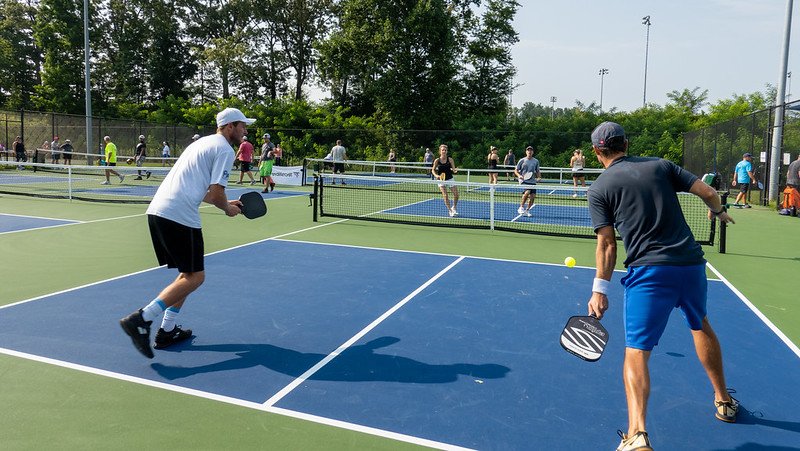
Rules and gameplay – Pickleball vs Padel
Pickleball
In pickleball, players have the option to engage in singles or doubles matches. Points are earned when the serving team commits a fault or fails to return the ball within the court boundaries. The serve in pickleball is executed underhand, ensuring fairness and ease of play. Following the serve, players are required to let the ball bounce once on the receiving side before volleying it in the air.
This rule fosters a balance between offense and defense, as players strategize to return shots while abiding by the rule to let the ball bounce. The bounce requirement encourages longer rallies and allows for increased involvement of players in the game, adding an element of anticipation and skillful positioning before striking the ball back into play. The underhand serve and bounce rule are integral aspects of pickleball’s gameplay, contributing to its accessibility and the dynamic nature of rallies during matches.
Padel
Padel, predominantly a doubles game, features a distinctive set of rules that shape its gameplay dynamics. Players engage in doubles matches where the use of walls is an integral part of strategy. Unlike many racket sports, in padel, players can hit the ball after it bounces off both the court and the walls, creating unique shot opportunities and encouraging tactical play.
The serve in padel stands out for its underhand delivery, requiring the server to strike the ball diagonally to the opponent’s service box. This rule prompts strategic serving, aiming to initiate rallies favorably. The emphasis on diagonal serves enhances gameplay tactics, encouraging players to position themselves strategically and plan their moves meticulously to gain an advantage.
With its doubles-oriented structure, utilization of walls, and specific serve regulations, padel cultivates an engaging and strategic game that combines the precision of tennis with the dynamic wall-based gameplay akin to squash, resulting in a sport that captivates players seeking an innovative and challenging racket sport experience.

Popularity
Pickleball
Pickleball has experienced a remarkable surge in popularity across the United States and various countries, carving its niche as a widely embraced sport, notably among older adults and within community settings. The game’s accessibility, combining elements from tennis, badminton, and table tennis on a smaller court, has contributed to its widespread appeal.
Older adults find pickleball appealing due to its less demanding physicality compared to some other sports, allowing for enjoyable yet less strenuous activity. Moreover, its relatively simple rules and quick learning curve make it attractive to newcomers and those returning to sports after a hiatus.
In community settings like parks, recreational centers, and retirement communities, pickleball has thrived as an inclusive and social activity. Its adaptability for varying skill levels, fostering camaraderie, and offering opportunities for both casual and competitive play, has propelled its popularity. As a result, pickleball continues to grow as a beloved pastime, uniting individuals of different ages and backgrounds in a shared passion for this engaging racket sport.
Padel
Padel, originally gaining prominence in Spain and various Latin American nations, has seen remarkable growth and widespread adoption in recent years. Its rise to popularity in these regions can be attributed to its accessibility, social nature, and adaptability to players of varied skill levels. Spain, in particular, has embraced padel as a cultural phenomenon, with numerous courts and enthusiastic players contributing to its strong presence.
Furthermore, the sport’s appeal has transcended geographical boundaries, witnessing an upsurge in interest across Europe and expanding to other corners of the globe. Countries beyond its traditional strongholds have shown an increasing inclination toward padel, acknowledging its blend of athleticism, strategy, and the sociable aspect of the game. This surge in interest has led to the establishment of more padel facilities, international tournaments, and a growing community of avid players, indicating a promising trajectory for padel’s continued global expansion and popularity.
Pickleball and padel, despite belonging to the realm of racket sports, exhibit notable disparities across multiple facets. Equipment stands as a significant differentiator: pickleball employs solid paddles akin to those in table tennis or badminton, coupled with a ball resembling a wiffle ball, while padel uses slightly smaller solid paddles similar to those in tennis and a pressurized ball resembling a tennis ball.
Court size constitutes another contrasting element; pickleball courts are notably smaller, approximately a quarter of a standard tennis court, featuring specific zones like the non-volley area, whereas padel courts cover roughly two-thirds of a tennis court’s size and include enclosed walls, allowing players to utilize them during play.
The rules governing each sport diverge significantly. Pickleball emphasizes the serve from an underhand position and mandates a bounce before striking the ball in the air, while padel permits players to hit the ball after it bounces off the court or walls and requires a diagonal serve to the opponent’s service box.
These distinctions extend to their popularity, with pickleball finding strong traction in the United States and some other regions, particularly among older demographics and community settings, whereas padel boasts a stronghold in Spain and Latin America and is progressively gaining momentum in Europe and other global territories. These contrasting elements collectively highlight the varied experiences and nuances offered by pickleball and padel, contributing to their distinctive identities within the realm of racket sports.

